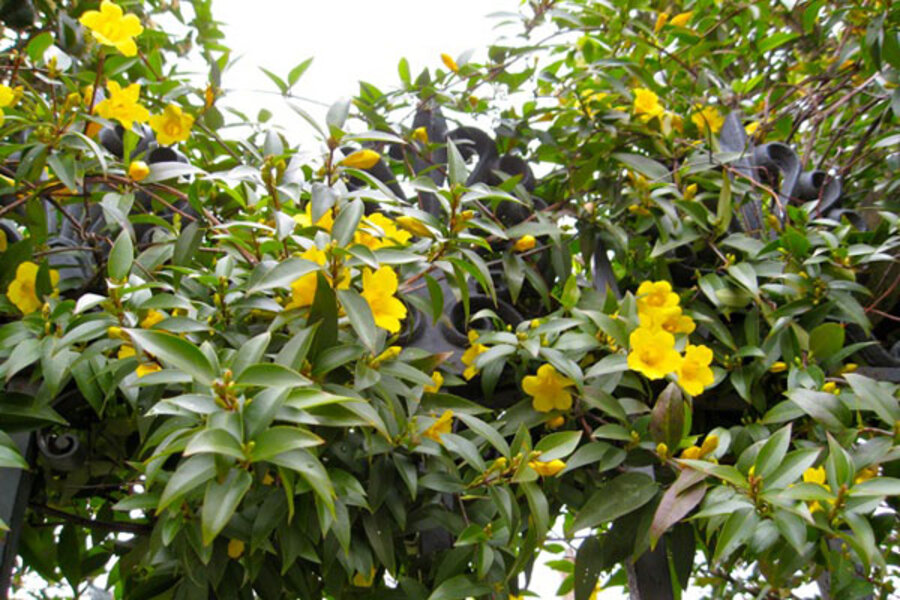A charming native vine welcomes spring
Loading...
With New Orleans so much in the news recently, it seems fitting that I dedicate today’s blog post to this revitalized city where my children live, and where I, a chilly New Englander, like visiting in winter.
Last February I flipped for a flowering Carolina jessamine, Gelsemium sempervirens, draped over a wrought-iron and brick wall at the historic Beauregard-Keyes House in the French Quarter.
The house has a formal walled garden, which replicates the original 1865 plan. Kudos to the Garden Study Club of New Orleans, a member of the Garden Club of America, for replanting and maintaining it.
Carolina jessamine is a twining woody evergreen (or, in colder areas, semi-evergreen) vine native to the southeastern United States (Zones 7 to 10), where it blooms on old wood in winter or spring. I saw it growing in full sun, where flowering is best, but it also tolerates some shade.
In addition to cloaking walls, it can cover arbors, climb trees, or scramble along the ground, depending upon how you train it. In conditions it likes, it grows briskly, up to 15 feet a year.
I like the slight winter purpling of some of the dark evergreen leaves; it makes the bright yellow flowers pop even more. Best of all, the fragrant 1.5-inch trumpets attract butterflies and hummingbirds.
Maintenance is a breeze. Train to tree or trellis by fastening canes loosely with stretchy vinyl landscape tape. For maximum bloom, wait until flowers fade to snip off wayward shoots.
If I lived in the Southeast, I’d grow this vine in a minute. The downside of this plant, you see, is that all parts are poisonous if eaten. Thus, folks with hungry pets and small children who gum everything in sight should consider growing a different plant.
Penelope O’Sullivan is one of eight garden writers who blog regularly at Diggin' It. She is the author of "The Homeowner's Complete Tree & Shrub Handbook" and 11 more books on trees, shrubs, hedges, flowers, herbs, and garden design. She is a guest speaker on many gardening topics, has written and scouted for numerous magazines, and owns a garden design business in New Hampshire.
Editor’s note: To read more by Penelope O'Sullivan, click here. The Monitor’s main gardening page offers articles on many gardening topics. See also our Diggin' It blog archive [keep scrolling down] and our RSS feed. You may want to visit Gardening With the Monitor on Flickr. Take part in the discussions and get answers to your gardening questions. If you join the group (it’s free), you can upload your garden photos and enter our next contest.






